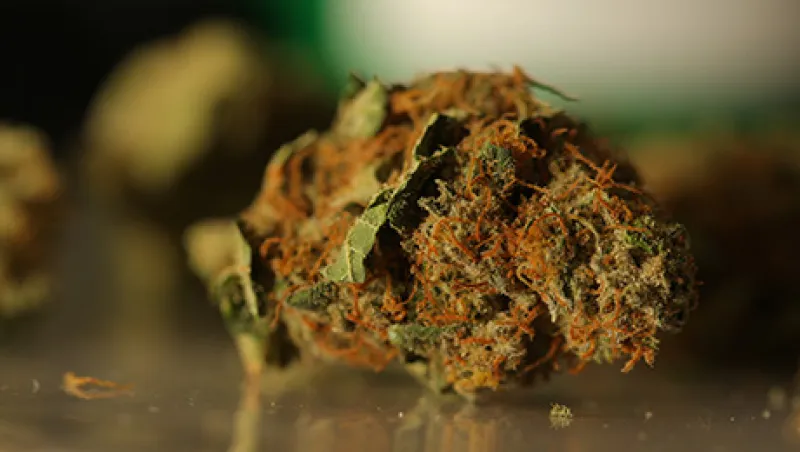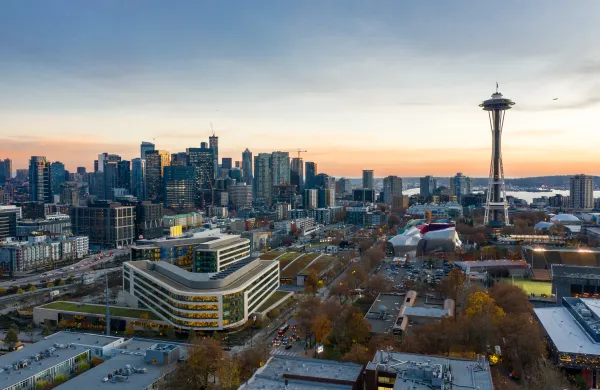With voters giving the green light, Colorado and Washington State blazed the trail that legalized recreational marijuana as of January 1; smokers, politicians and bond investors alike are wondering what comes next. One of the strongest possibilities is that new revenues for states and cities could boost their fortunes enough to improve their credit ratings or sell bonds backed by that specific income. A handful of other states is also considering legalization of marijuana and will be watching closely in the coming months as these young markets mature.
The revenue forecast is hazy. Colorado has had only five full weeks of sales of legal weed, which has been racked by supply shortages. So far, supply has been no easier to manage than demand. By mid-January many Colorado shops were already running out. Because the brand-new industry is tightly regulated and growers have not yet scaled up, a shortage may persist for the rest of 2014.
Sales in Washington State will not start until June. The state expects as much as $2 billion in sales in its first five years of legal weed. Officials there had predicted annual consumption at roughly 85 metric tons until a study by Washington, D.C., think tank Rand Corp. forecasted a range between 120 and 175. Randy Simmons, a former pensions executive and the present Washington State Liquor Control Board deputy director, puts the state’s collective illegal pot consumption estimate in 2013 at 165 metric tons.
Once supply and demand are balanced, the next challenge is to get the tax regimen right. Set taxes too high, and that might keep many smokers in the black market, depriving governments of revenue. If taxes are too low, consumers will not be coughing up enough cash to make a difference to the state coffers.
Washington and Colorado have built some flexibility into their tax schemes in hopes of avoiding chronic problems. In both states legal marijuana is taxed not by weight but by price, and at each step in the value chain. In Colorado there are two steps: wholesale and retail. Wholesalers face a 15 percent levy, whereas retailers pay 10 percent. Colorado has capped the taxes that apply to pot at any stage of the process at 15 percent, which the legislature can lower. But an increase above that level would require voter approval.
Washington State is planning to tax legal pot 25 percent at each of these steps: grower to wholesaler, wholesaler to retailer and retailer to user. Producers can wholesale, which would eliminate the tax at that first step, leaving two taxes. Washington has given itself more wiggle room than Colorado in terms of a later tax-rate adjustment. A two-thirds majority of the legislature can approve changes now, but after two years of promulgation of the new marijuana laws, a simple majority will be enough.
Perhaps the biggest threat to a sustainable marijuana economy is the U.S. federal government. According to Allen St. Pierre, executive director of the National Organization for the Reform of Marijuana Laws in Washington, D.C., the most likely scenario for this is if a Republican returns to the White House — particular, Indiana Governor Mike Pence, who has been dubbed by various news outlets as a dark horse to watch in the 2016 GOP primaries.“If the federal government returns to being extremely antimarijuana, then all bets are off the table,” says St. Pierre.
For his part, President Barack Obama has said that removing marijuana from the Drug Enforcement Administration’s list of Schedule 1 narcotics “is a job for Congress,” although in an interview with the New Yorker that ran January 27, Obama went on the record as saying that in his view, at least, marijuana is not any more dangerous than alcohol. Congress does not necessarily need to get involved to effect change toward either side, as executive orders could accomplish such a reversal. The U.S. Department of Justice updated its marijuana enforcement policy in August in reaction to the state marijuana legalization referenda, which warns states to have in place tight regulations, or “federal prosecutors will act aggressively to bring individual prosecutions focused on federal enforcement priorities.”
Political jockeying aside, the combination of overwhelming demand and high taxes looks powerful. Unless the feds play the fuzz, smokers could very well push revenues higher. Hitting that taxation sweet spot is difficult without real world experiences as case studies. Both states have chosen to calculate the tax based on sales prices, instead of by potency or weight. Potency is difficult to measure because it is not equal throughout the cannabis plant, says Pat Oglesby, a former congressional tax counsel and the founder and CEO of the Center for New Revenue, a Chapel Hill, North Carolina–based nonprofit where he researches marijuana legalization and tax revenue and reports on his blog, Newrevenue.org.
But the expectation is that pot’s progress to a mature and legal economy will include a big drop in price. “Some of the states are looking at a weight-based tax, which is to me a more sensible way of doing it,” Oglesby says. Alaska and Maryland, for example, have considered levying a $50-per-ounce tax instead, with the rate indexed to inflation. Alaska, Oregon and California may vote on legalization in 2014; Maine and Massachusetts are also considering it, says St. Pierre.
Bond ratings agencies have remained tight-lipped about the potential impact on Colorado and Washington State’s municipal bond ratings in light of the new revenue. Moody’s declined comment. Standard & Poor’s declined to comment directly, saying state analysts have not had a chance to take a look but may do so in the future. Laura Porter, managing director and head of the states ratings group at Fitch, was quoted by a spokesperson as saying about Washington State, “There are no new revenues assumed in their budget, so there is upside potential, but nothing that would change the rating, which is already very high, at AA+.” S&P has Colorado at AA and Washington at AA+.
To measure the ultimate economic impact of legalized marijuana, analysts and investors need to try to answer several questions. Will pot be an additional source of revenue, or will some consumers choose pot over booze at a greater rate? Will people opt to smoke weed or eat infused edibles? (The latter would likely have a higher value and therefore rake in more tax money.) Will legal weed give purchasers peace of mind, knowing that it has not been laced with other substances? And how many people will be willing to travel across state lines to get high, and once they arrive, where will they smoke, given that public consumption is banned? Tourism revenue could receive a significant boost, but it may be short-lived as the novelty wears off and the options for legal purchases in other states increase.






